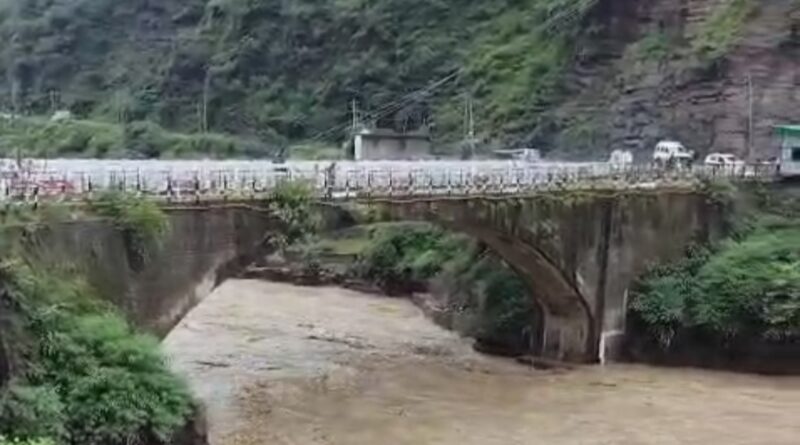Maximum water level of flood in Giri river increased by four meters
Due to continuous rains for the past several days, the Giri river was in great spate. On Friday, the junior engineer of the Central Water Commission located in Maryog said that the maximum water level of the Giri river has been recorded to be only four meters this year. Seeing the fierce form of the Giri river, the people living on the banks of the river were very scared. Due to the flood, many drinking water and irrigation projects lifted from the Giri river have been affected.
JE told that this year the havoc of rains in the entire state has caused loss of crores of rupees but there has been no significant increase in the water level of Giri river. He told that the record of flood in Giri river on 20 September 2008, about 17 years ago, has not been broken till date. During this time the water level of Giri river had increased by about 9 meters and Giri river had started flowing above the danger mark.
JE told that the river base level of Giri river in Yashwantnagar has been fixed at 895 meters, which is considered as the base for measuring the depth of water. This time the maximum water level has been recorded at 899 meters i.e. four meters, which is the highest water level of this rainy season. He told that in the year 2008, the highest water level of 903.80 meters i.e. 8.80 meters was measured. Apart from this, the highest discharge level of 1787.59 cusecs was recorded on 5 May 1995, which has not been broken till date. He told that the catchment area of Giri river is 1349 kilometers.
He informed that the Central Water Commission has also installed an automatic satellite camera in the Giri river of Yashwantnagar whose connection is directly connected to the divisional and sub-divisional offices of the Water Commission in Delhi. Through this automatic camera, the daily report of the water level of the river is sent to Delhi where it is monitored by experts.
Let us tell you that in the past, people living on the banks of Giri river used to have their own unique way of measuring the flood in the river. Villagers used to measure the flood by the huge rocks lying in the river, i.e., when there was a severe flood, the rocks of the river used to sink. When they sank, people used to sacrifice goats on those rocks to please Swaaja.



